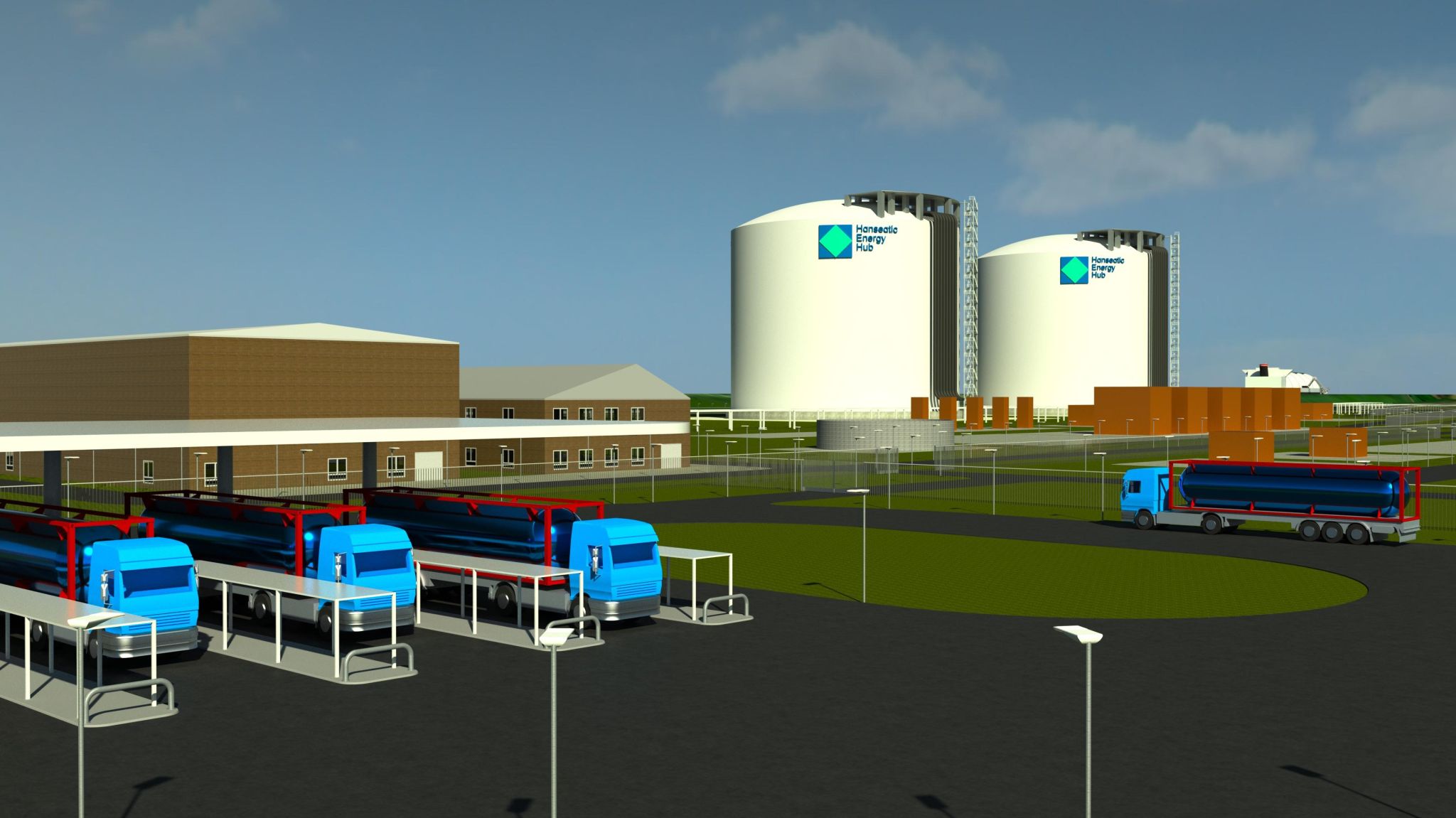Germany’s Hanseatic Energy Hub, the developer of the Stade LNG import terminal near Hamburg, is looking to import liquefied natural gas from GNL Quebec’s planned facility in Canada.
GNL Quebec, which is developing an 11 mtpa LNG export plant in the Port of Saguenay, said in a statement it has signed a strategic partnership with Hanseatic’s shareholders.
Moreover, the partners plan to develop a low-carbon LNG supply chain from Canada to Germany, according to the joint statement.
Current partners of the Hanseatic Energy Hub include Germany’s Buss Group, Switzerland’s Partners Group, and Belgium’s Fluxys.
The firms agreed on developing joint standards and processes for LNG supplies from GNL Quebec’s Energie Saguenay export terminal in Quebec into Hanseatic Energy Hub’s regasification terminal in Stade,” the statement said.
The strategic aim is to meet the growing demand for gas imports in Germany as a consequence of the coal phase-out and the declining indigenous production as well as the increasing focus on the reduction of carbon footprint of the supply chains, they said.
As part of the deal, the partners said they would jointly explore regulatory and technological
solutions throughout the supply chain to monitor and reduce the greenhouse gases associated with each cargo, including molecule tracing using blockchain technology.
LNG supplies could start in 2026
Tony Le Verger, president of GNL Quebec said that, with this announcement, the Energie Saguenay project has reached a “new important milestone in its development.”
Manfred Schubert, managing director of Hanseatic Energy Hub said the partnership would lay the foundation to provide low-carbon LNG from Canada for the German industry.
“We are confident that this agreement supports the German-Canadian energy partnership concluded by our governments in March,” he said.
Schubert added that the company’s “long-term vision is to develop the Hanseatic Energy Hub into an import terminal that will supply carbon-neutral fuels, such as hydrogen, to our industry.”
Located on the Elbe river within the Dow industrial park, the Stade terminal will have a 12 Bcm/year capacity.
Besides offering send-out to the German gas grid and for local consumption, the facility will also enable reloading to LNG tankers, river barges for bunkering, trucks and on-site rail.
Hanseatic said it plans to launch the facility in 2026, the same year when GNL Quebec targets the official launch of the Energie Saguenay LNG export terminal.

